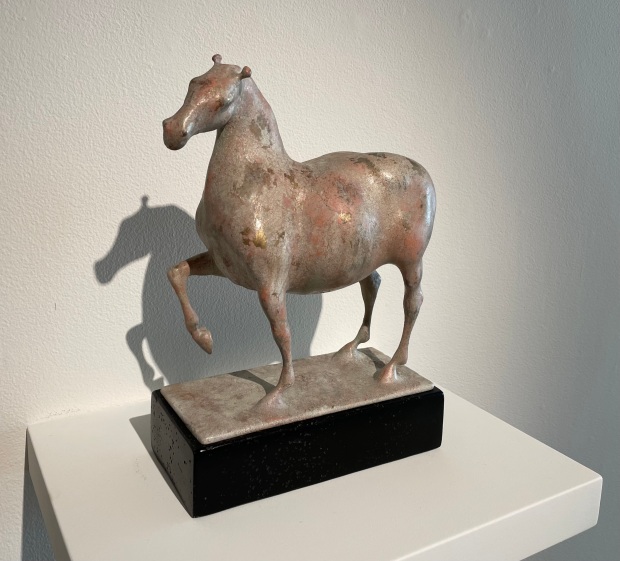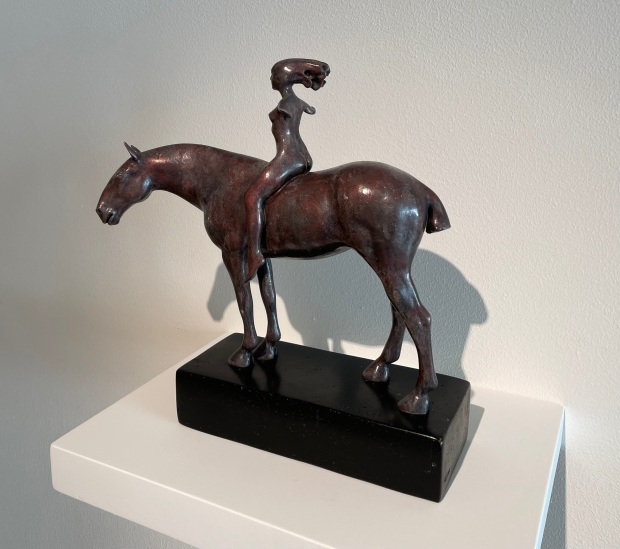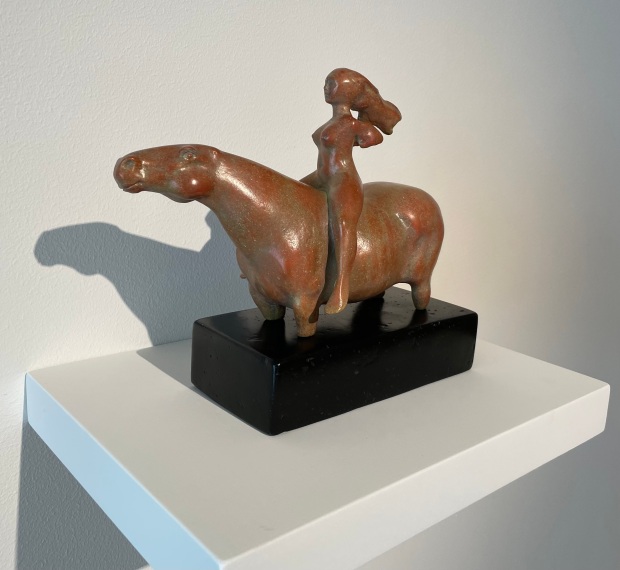Arthur Kern, Silent Myth (2006)
Those who know Grand Rapids, Michigan, and who appreciate sculpture, will be familiar with Meijer Gardens. A principal monument among their collection of sculptures is the impressively large rendering of Leonardo DaVinci’s horse, by the artist Nina Akamu. As remarkable in size as that sculpture is, it is a fine example of how so many artists have been fascinated by the equine form. Consider among others, the ancient Etruscan horses; the ceramic figurines from the Chinese Ming dynasty; as well as Degas’ rendering of lithe race horses, or the roughly contemporary western bronzes of Frederick Remington and Charles Russell. In all these, this historically important animal companion to both our human community and our many activities has so often received sculptural tribute through artistic imagination.
Recently, I had the wholly unexpected opportunity to discover the powerful work of a 90 year old Louisiana sculptor, whose output until 2016 had largely been out of the public eye for over 30+ years. The Callan Contemporary Gallery in New Orleans has until late April an impressive show of 18 cast resin sculptures almost all featuring horses with riders, or with some representation of a human form. Two of the works are at a stunning life size, while the rest are roughly around twelve inches in height and width. I was not previously familiar with the artist’s work, and was bowled over by its beauty. Here is an example of a smaller work:
Here is another:
And another:
Wherein does that beauty lie? I think it is found in Kern’s studied sensitivity to the anatomic beauty of horses, while he also takes obvious liberty in moving beyond literalistic portrayal of particular equine breeds. Though some observers use the term ‘surrealist’ to describe his approach, I prefer the admittedly cumbersome phrase, ‘representationally explorative.’ Further, Kern’s employment of a lost wax process for producing the molds has given him an opportunity to play with the plasticity of the resin in those molds, as well as to manipulate the coloring of the results. And because of his employment of this casting process, originally used for bronze sculptures, each of the pieces in this show is one of a kind, and not an example of a numbered series.
Just as compelling is the knowledge that after a successful career as a painter and professor of art, Kern then burned his remaining paintings, and moved to a largely hermit life as a sculptor, working privately without any assistants while casting in several cases significantly large works at his home or in his garage. The series of horse sculptures, among other works, is the fruit of several decades of dedicated work, outside the notice of the commercial art world.
It is not evident whether Kern’s loving regard for the human and animal form reflects a religious or spiritual appreciation for the source of the beauty they represent. Yet, his sensitivity to these forms evidences a spirit of positive regard for the world around us that parallels voices of praise that we hear in the Psalms and in many other passages of Scripture. Men and women, throughout history, have loved and admired the form and structure of so many examples of ‘flora and fauna,’ and that of the horse in particular. To me that is surely due to the way that our appreciation for what enriches our lives reflects the transcending and loving regard of our Creator, Redeemer, and Sanctifier, for both us and all of Creation.
Photographs are by the author (all rights reserved) with permission from the gallery. Arthur Kern, Horses, at the Callan Contemporary Gallery in New Orleans until April 23. I encourage you to seek images of and reflections upon his work on the internet. Here is a link to the exhibit: https://www.callancontemporary.com/artists/arthur-kern



